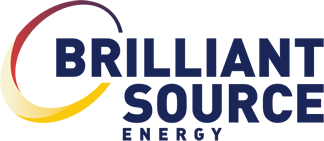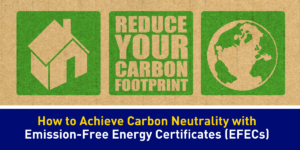The average household wastes around 180 gallons of water each week—enough to do over 300 loads of laundry each year—simply due to leaks. Water, one of Earth’s most precious resources, is increasingly threatened by climate change, population growth, and unsustainable use. Droughts, dwindling freshwater supplies, and strained ecosystems all underscore the urgent need to reduce water consumption and secure resources for the future.
Conserving water also makes economic sense. As scarcity drives utility costs higher, households, businesses, and municipalities alike face rising water bills. Water-saving technologies and practices not only protect this essential resource but also lower operational costs, benefiting both finances and the environment. Water reduction grants provide crucial support for these efforts, helping organizations adopt water-efficient technologies, establish recycling programs, and fund infrastructure upgrades. By financing these projects, grants enable communities to safeguard resources and create a lasting impact.
What Are Water Reduction Grants?
Water reduction grants, funded by governments, organizations, and foundations, support projects that aim to reduce water use and improve efficiency. These grants cover initiatives like upgrading infrastructure, installing water-saving technologies, and promoting sustainable water management practices. By supporting conservation, water reduction grants help communities and organizations lower water consumption and achieve long-term sustainability.
Typical projects funded by water reduction grants include:
- Installing water-efficient devices and systems
- Developing greywater and rainwater reuse systems
- Modernizing water infrastructure
- Enhancing irrigation efficiency
- Implementing stormwater management and drought-tolerant landscaping
- Raising awareness around water conservation
- Conducting water audits
These initiatives mitigate water scarcity, reduce treatment and distribution costs, and contribute to environmental conservation and climate resilience.
Who Can Apply for Water Reduction Grants?
Water reduction grants target a wide range of applicants, from municipalities to individual homeowners, with eligibility varying by applicant type and regional needs.
- Municipalities and Local Governments: Cities, counties, and local agencies often qualify for regional and some national grants, such as the U.S. EPA’s Water Infrastructure Finance and Innovation Act (WIFIA).
- Businesses and Industries: Companies, particularly those with high water demands, can access both regional and national grants like USDA efficiency grants and utility rebates.
- Nonprofits and Community Organizations: Nonprofits focused on water conservation or community projects may be eligible for regional grants, with some national programs available.
- Schools and Educational Institutions: Schools and universities that implement water-saving practices may qualify for funding through local or national programs.
- Agricultural Producers: Farmers and ranchers can apply for federal and state grants to improve water efficiency, including USDA’s Environmental Quality Incentives Program (EQIP).
- Water Utilities: Public and private utilities may apply for grants to upgrade infrastructure and improve water efficiency.
- Residential Property Owners: Homeowners can often receive local rebates for installing water-saving fixtures, provided through utilities.
- Tribal Governments: Native American tribes may access grants for water efficiency and infrastructure improvements.
Federal agencies like the USDA and EPA offer nationwide grants, while many states provide funding tailored to specific regional needs, especially in drought-prone areas.
Examples of Water Reduction Grants
Numerous programs provide financial support for water conservation projects. Here are a few notable options:
- WaterSMART Program: The U.S. Bureau of Reclamation’s WaterSMART Program funds projects that improve water efficiency and drought resilience across 17 western U.S. states, with grants typically ranging from $100,000 to $1 million.
- EPA Water Infrastructure Finance and Innovation Act (WIFIA): WIFIA, managed by the EPA, offers low-cost loans for large-scale water infrastructure projects, such as water treatment plant upgrades and reservoir construction. The program can cover up to 49% of eligible project costs.
- National Fish and Wildlife Foundation (NFWF) Conservation Grants: NFWF grants fund projects that improve water quality, restore habitats, and reduce pollution, ideal for community-based efforts with measurable environmental impacts.
- USDA Water and Waste Disposal Loan and Grant Program: This USDA program supports rural communities with clean water systems and waste disposal infrastructure, targeting small towns and districts.
- State Water Conservation Grants: Many states offer conservation grants tailored to local needs. For example, Ohio’s Water Supply Revolving Loan Account (WSRLA) provides low-interest loans and grants for municipalities to upgrade drinking water infrastructure.
How to Apply for Water Reduction Grants
Securing a water reduction grant involves careful planning. Here are the essential steps:
- Find Relevant Grants: Use resources like Grants.gov and EPA WaterSense to locate water conservation grants, and sign up for grant alerts to stay updated.
- Check Eligibility: Confirm that your organization and project meet the grant’s requirements. Contact the grant provider with any eligibility questions.
- Craft a Project Proposal: Define clear objectives, such as specific water reduction targets, and highlight measurable outcomes.
- Prepare Key Documents: Include a detailed project narrative, timeline, and budget breakdown. Letters of support from partners or stakeholders can strengthen your application.
- Create a Feasible Timeline: Outline project phases and set achievable milestones.
- Write, Review, and Submit: Use clear, concise language, and follow all application guidelines. A second review can help catch errors or overlooked details.
- Submit and Follow Up: Confirm submission requirements and verify receipt. Sending a follow-up email to thank reviewers adds a professional touch.
Application Tips: Emphasize the environmental and community benefits of your project, include a maintenance plan to show sustainability, and provide a detailed, itemized budget.
The Power of Conservation
In a world where water is increasingly precious, conservation is not just a choice but a shared responsibility. By researching and applying for water reduction grants, you can create meaningful change in your home, business, or community. These grants offer financial support and provide a way to join a growing movement toward sustainability and resource stewardship. Explore local, state, and federal funding options that align with your goals and recognize the impact even small changes can make. Together, we can prioritize water conservation and create a sustainable future for generations to come.
Resources to Explore Water Reduction Grants
Here are some helpful resources for finding grants and learning more about water conservation funding opportunities:
- EPA Source Water Protection Funding
- Ohio Soil and Water Conservation Grants
- USGS Water Resources Research Grants
- EPA Water Research Grants
- NOAA Funding Links
Contact Us
Contact us at Brilliant Source Energy, and let’s discuss your water usage and sources and a sustainable plan for the future.






